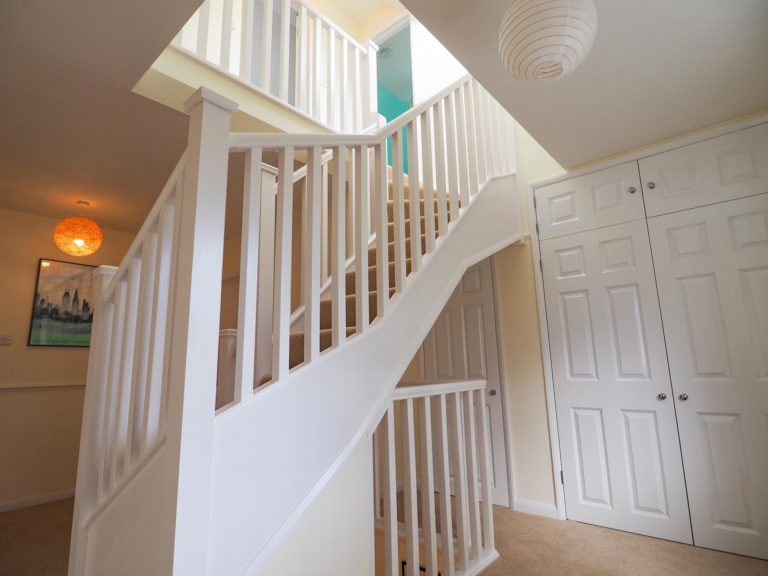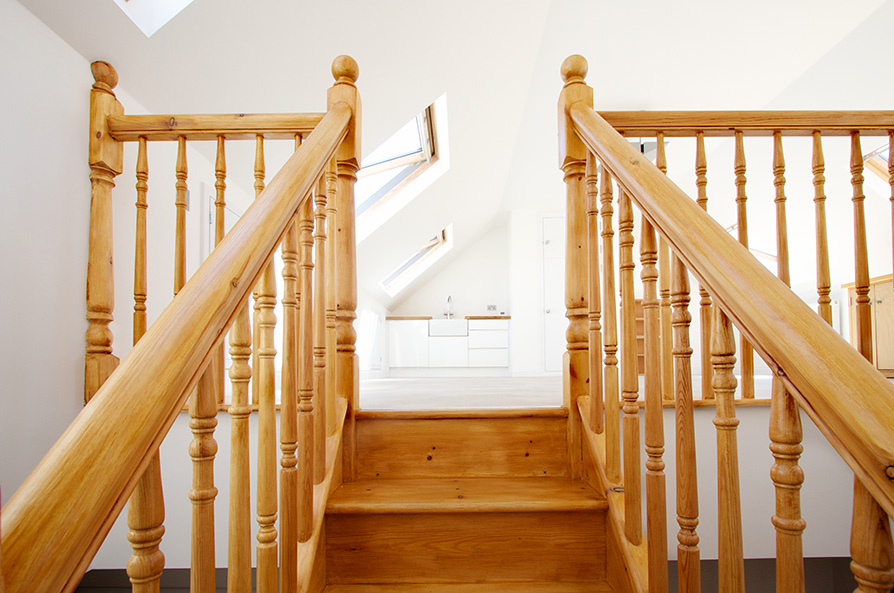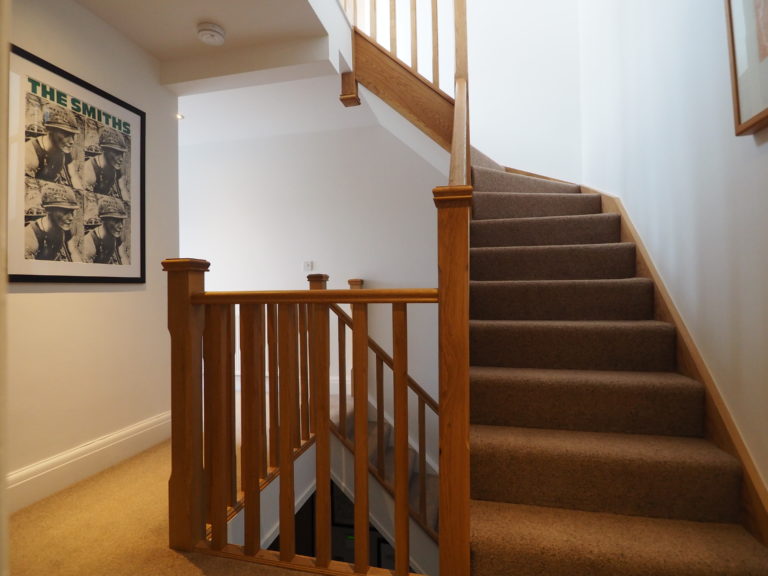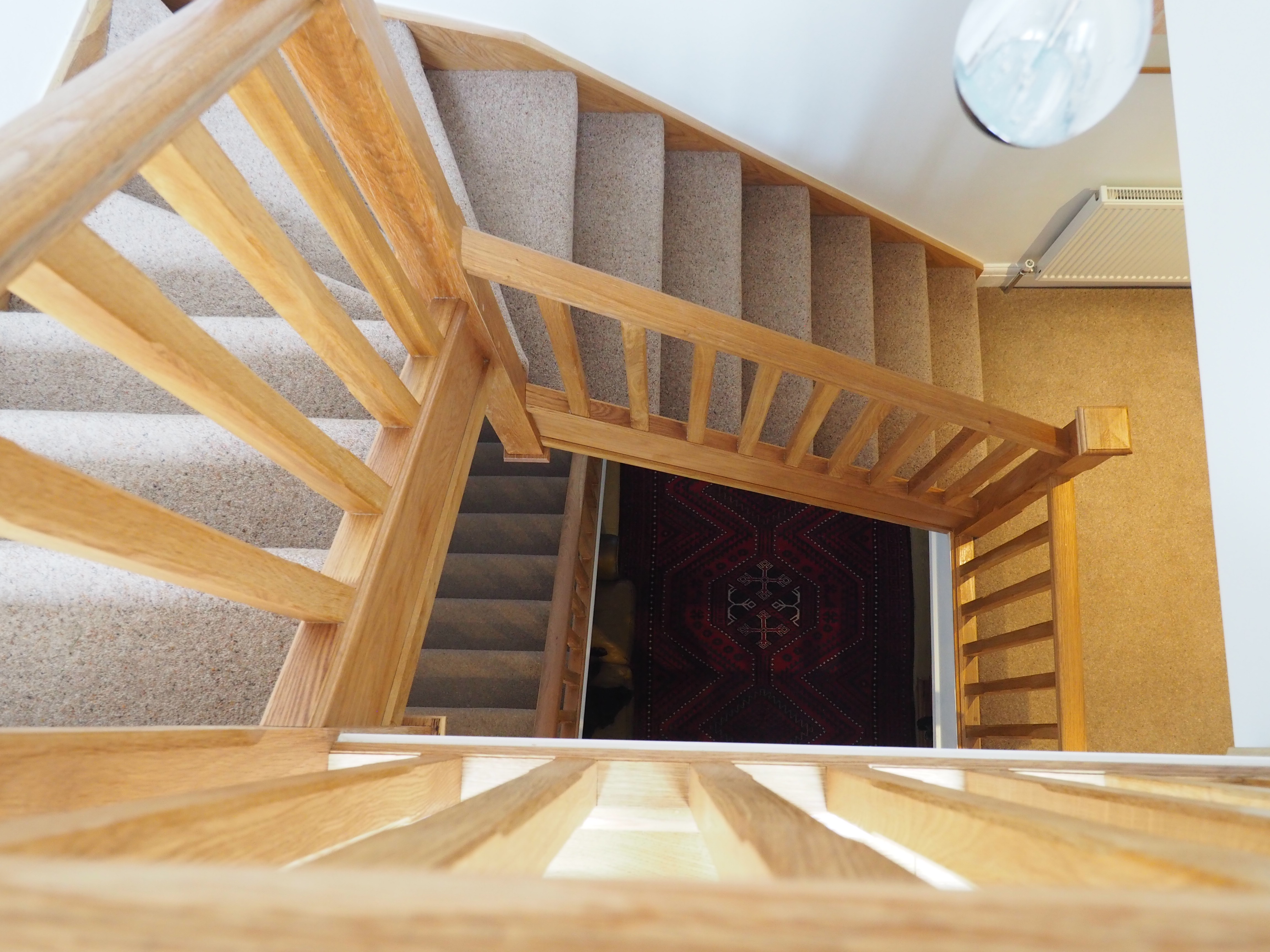One of the most important aspects of your loft conversion is something which isn’t in your loft.
Planning the access stairs is an essential early requirement of your loft conversion project. Your stairs have to be practical and economical with regard to space as well as looking good. With the experience of hundreds of loft conversions behind us, we are expert at designing stairs that will compliment your house and meet your particular needs. When you choose All Lofts Conversions for your new loft conversion we will discuss the options in detail with youat our first site visit, but here are a few thoughts and ideas which might help you to start thinking about your new staircase.
Important Considerations for Stairs to a Loft Conversion
You initial thoughts should be ‘where is the best place to access the loft and where is the best place to exit the on the ground floor?’ The shortest route between these two points should be the best location for the stairs. It is often thought that the bottom of the stairs should be near a door on the ground floor for ease of escape in the event of a fire. However, there may be practical considerations with regard to the existing layout of your house which preclude the shortest route for the stairs. We are expert at solving these problems, and nothing is impossible. An important thing to remember is that the range of options available is also constrained by the need to conform to building regulations and fire safety, so these aspects must be taken into account when considering the position of your stairs.
Building Regulations for Loft Conversion Stairs
There are a number of building regulations which must be adhered to when designing your stairs.
The opening for the stairs into the loft has to meet building regulations in order to ensure the stability of the rest of the house, and we will ensure that this meets all the requirements.
The stairs must have enough headroom clearance. In order to comply with building regulations for headroom, clearance should be 1.9m at the centre of the stair width and 1.8m at the sides.
There are also regulations about the width and height of the risers (steps), and the pitch of the stairs is also important as it must not be too steep. A maximum pitch of 42° is normally the requirement, although this rule can be broken in the case of a space saver staircase (see below), but if a space saver is used the access should normally be only to one habitable room (although building inspectors do vary on this).
Fire Safety for Loft Conversion Stairs
Stairs also have to meet fire safety standards for escape routes.
A retractable ladder is not normally acceptable.
The new loft conversion has to be fire retardant so a fire door must be fitted to the loft stairs. If the new stair is situated above the existing staircase then a fire door can be located at the top on a small landing. If the new stair is away from the existing stairs then the fire door should be at the bottom of the new stairs.

Fire Safety for Loft Conversion Stairs
Stairs also have to meet fire safety standards for escape routes.
A retractable ladder is not normally acceptable.
The new loft conversion has to be fire retardant so a fire door must be fitted to the loft stairs. If the new stair is situated above the existing staircase then a fire door can be located at the top on a small landing. If the new stair is away from the existing stairs then the fire door should be at the bottom of the new stairs.


Different Types of Stairs Design
We can basically make any style of staircase you wish, but normally we will match your new staircase with your existing one so that they marry seamlessly into one structure.
Built over existing stairs
This is usually the most attractive option because it saves space and looks as though it has always been there. The new staircase is built above the existing one, with the provision of a small landing, and therefore provides a single stairwell, and also making the stairs appear to be of one piece.
Taking space from an existing room
If you cannot build above the existing stairs you may need to be more creative. Altering the configuration of the first floor rooms is an alternative which could be considered. It may be that there is enough space for the stairs in part of an existing room which could be separated off, or you might decide to lose a small room which is rarely used.

Creating space in the loft for the stairs
If you are considering a loft in a gabled roof your options for the stairs are limited to the vicinity of the ridge of the roof in order to give enough headroom for the stairs. You can, however, give yourself more options for the staircase location by considering the addition of a dormer window in the loft which increases the available headroom.
Alternatives to a straight staircase
If there is not enough room to create a straight staircase from the first floor to the loft there are other alternatives. The new staircase could be split into two flights; either with a quarter landing (90°) turn, or turning back on itself with a half landing (180°). You might find that the space available only allows for a winder staircase, the treads of which turn a corner as they rise, or that a winder needs to be incorporated as part of the solution.
Space saver staircases
These are not particularly liked by building inspectors but may be the only option. They are also known as alternating tread staircases or paddle stairs because they sometimes have paddle-shaped treads on alternate steps for more secure footing. Space savers comprise a straight flight of steps with shortened alternate treads and have handrails for safety. They cannot be used as the main staircase, but are a possible alternative if the potential pitch of the stairs has to be greater than 42°. However, if this is your only option it is worth checking with the local building inspector first for the interpretation of the regulations.
Lighting
Finally, when thinking about your new staircase it is always a good idea to check that there will be enough light for safety, particularly at the top and bottom of the stairs. If there is not enough natural light it is worth considering adding artificial lighting.
We hope these few thoughts are helpful and give you some ideas which we can discuss at the site visit.

